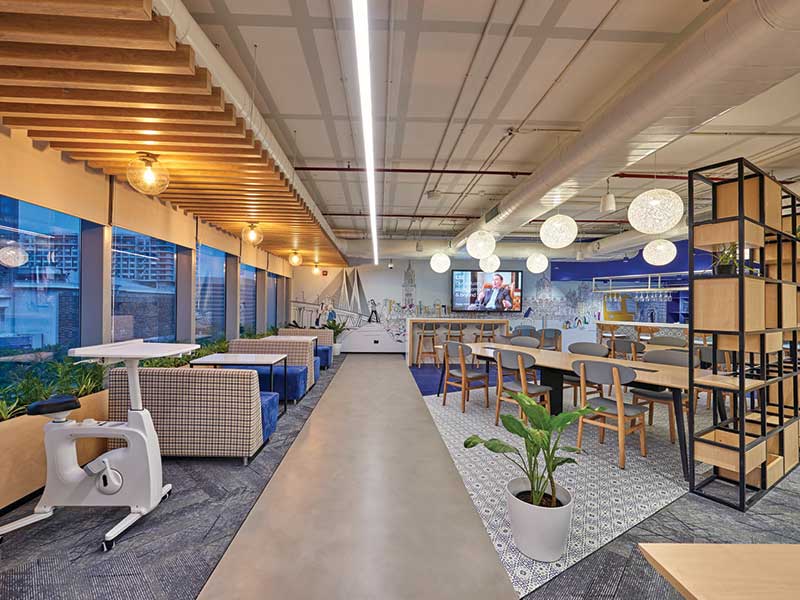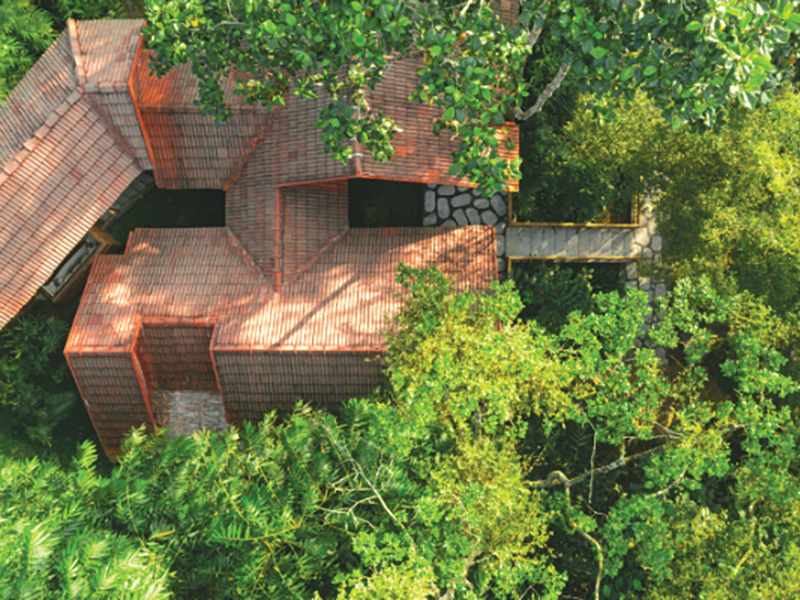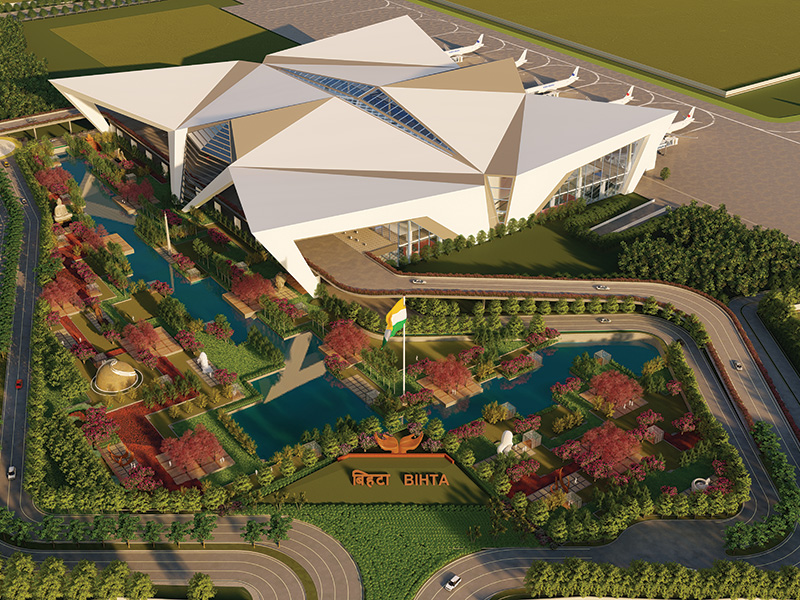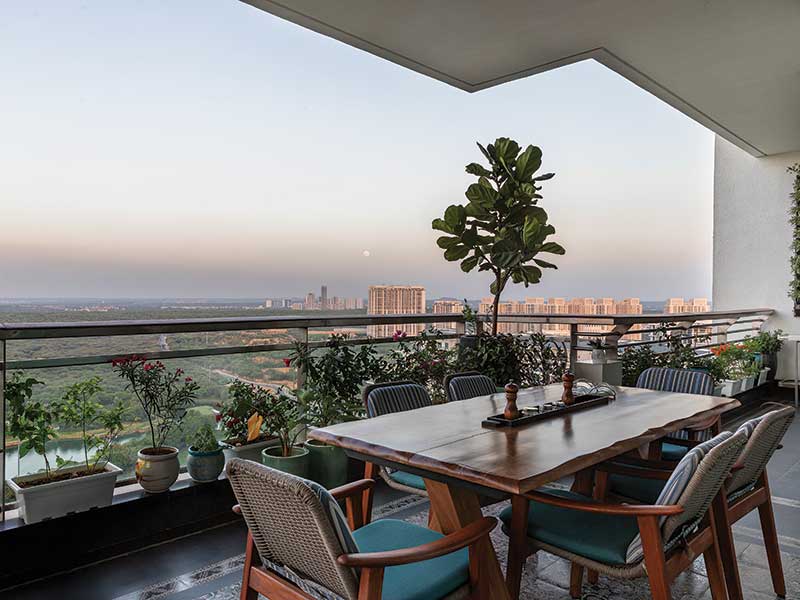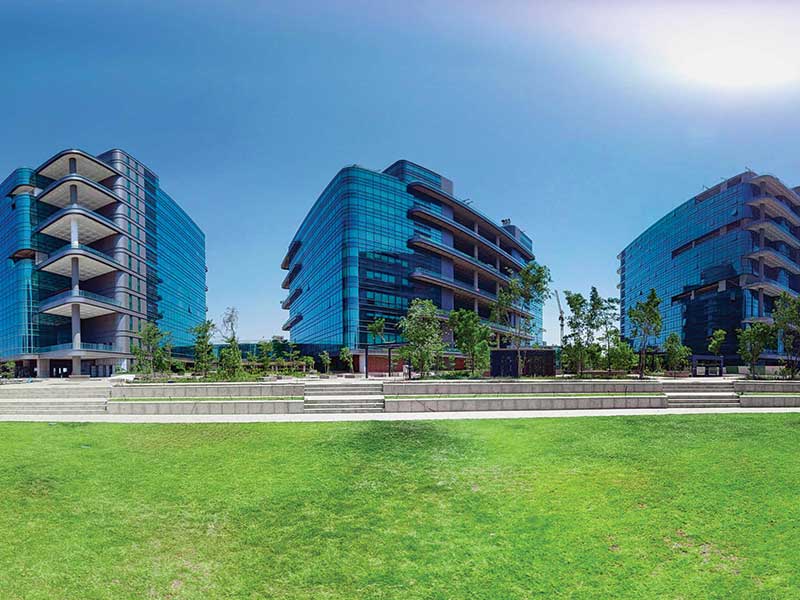For 2022, surely one can look forward to sustainable products, large windows, and different shading options.
Dr. Mario Schmidt, MD, Lingel Windows & Doors Technologies
How are modern window systems evolving in India?
Customers these days are very informed of the trends and are very willing to opt for modern products that are especially made in Europe. Many customers are making a choice between Aluminium and UPVC.
Customers have started planning their budgets keeping in mind their fenestration needs. Security has become a concern for many and so we at Lingel started catering to this demand at a higher level than before. For customers looking for grills, we are offering Lingel Panzer Glazing (LPG) and Lingel Safe box options.
Our Lingel security windows are a perfect combination of glazing and hardware. This product is in high demand and consumers are realising the importance of this fenestration. The fenestration industry had not experienced such a drastic change in the perspective of how a customer would make fenestration choices for their homes. Post Covid our customers realised the importance of a well-ventilated house.
What new demand do you see emerging?
Niche products are in demand. Roller shutters that are made in Germany, windowsills, and even security window solutions, are attracting buyers.
Garden areas are being utilised more efficiently with glass conservatories and use of shading systems like pergolas or awnings, all of which are finding favour with people living in hill stations like Uttarakhand and Himachal. Buyers in Goa and Chandigarh prefer Georgian bar windows and doors, while customers in the metros want sound insulated fenestration systems.
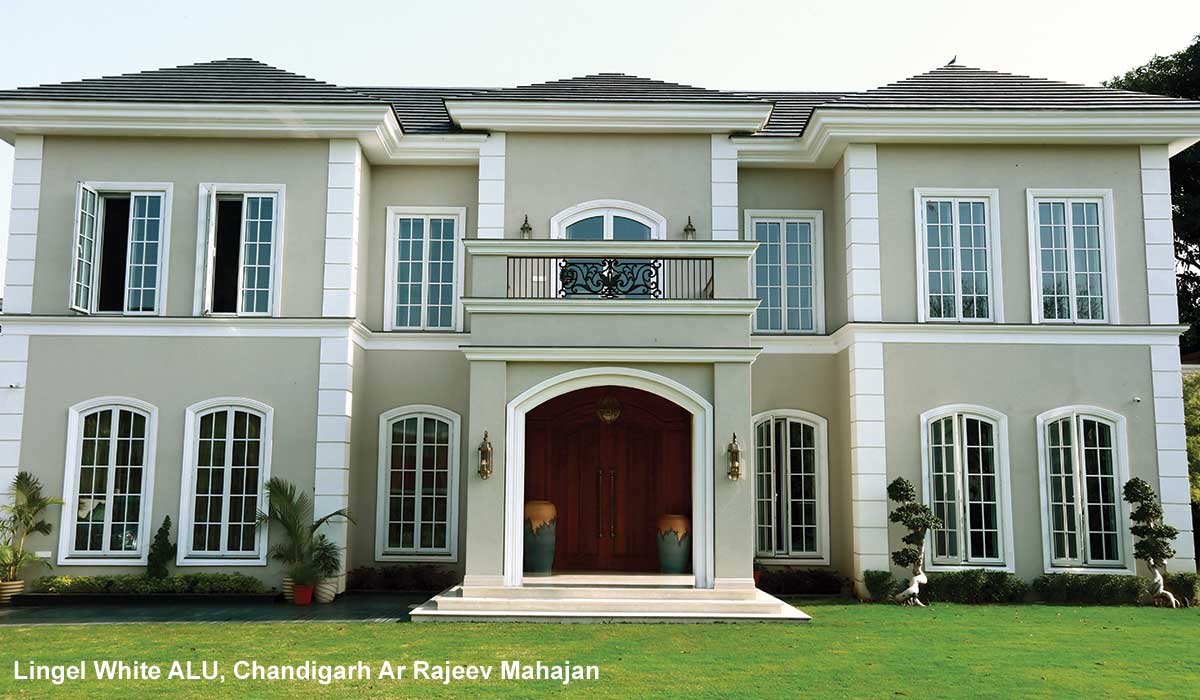
What gives Lingel products an edge over other competing brands?
We are the trendsetting solution provider with our own fenestration systems including in-house fabrication and installation. We are the only brand in India offering all kinds of fenestration products like uPVC, Aluminium, and Wood.
There is a growing preference for more functional, and feature-rich bathrooms equipped with sanitaryware of new design concepts, with a focus on touchless products for optimal hygeine.
Bantwal Ramesh Baliga, CEO, Watertec
What trends do you see emerging in sanitaryware as regards design concepts, colours, and space saving solutions?
Market trends looks positive in the sanitaryware space. Consumers are renovating their homes and there is greater focus on hygiene, especially in wet areas like the kitchen and bathroom. With Work-from-Home causing greater usage of the bathroom, homeowners are considering enhancing the space with quality and hygiene conducive sanitaryware. New and more compact designs for smaller bathrooms are also trending, for which we see a huge potential in 2022.
Consumers are increasingly becoming hygiene conscious. There is a growing preference for more functional and feature-rich bathrooms, equipped with sanitaryware of new design concepts. Customers are moving from traditional standard closets to wall-mounted closets and pedestal basin to over-the-counter basins because these are more contemporary in design. This shift can be attributed to their ease of cleaning and thin rim designs, which are space saving and trendier as well.
The wall-hung makes a bathroom look modern. Demand for the easy-to-clean floor which promotes the dry bathroom concept is on the rise. Additionally, the colour white has a wider attraction than ivory. Sales of the flushing system has also increased as it is a space saver. What tops the main feature is the seating on the commode, particularly as regards comfort and size, besides ease of usage and an ergonomic design.
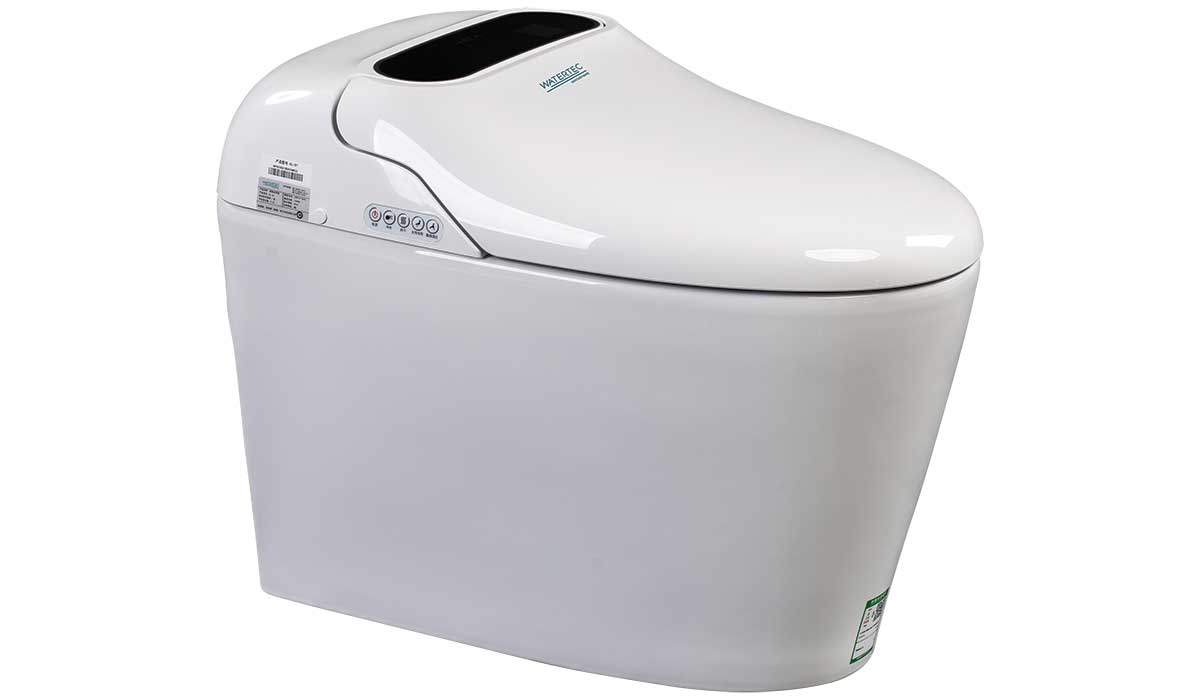
How are Watertec’s innovations, technology, and designs driving consumer preferences?
Watertec’s innovations and technology are directed towards enhancing water and energy efficiencies for greener homes, besides potability and affordability. Our products can give an outflow of 4-5 litres/min at 1.2 bar pressure, which is the best rate of flow in the industry today.
In fact, Watertec is known for its water-saving products and we have been engineering products to resolve the issue of contact-less usage long before it became the current norm. Our products deliver the “H2O promise of Health, Hygiene, and Original products” to ensure 360-degree hygiene and sustainability in bathrooms.
There are now numerous innovations around touchless products with value-added features. Minimal touch, anti-fungal, anti-bacterial and odour-free bathrooms are in demand. Almost all Watertec sanitaryware products come with atleast one of these features, while some of our high-end products have all of these features.
Our end-to-end bathroom solutions and designs use scientifically formulated raw materials that are anti-fungal, anti-bacterial, anti-microbial in nature. Plus, the designs promote ergonomic and minimal touch, for example, we offer sensor-based faucets, anti-bacterial and anti-fungal dual & single flush cisterns, anti-bacterial seat covers, a stainless steel range, etc, to name a few. All products are designed in-house and are available in snow-white colour. We also manufacture all the cisterns, concealed cisterns, flush valves, touch sensors, etc.
What market demand do you see emerging in 2022?
We have presence pan India and are catering to consumers across the country. We are seeing increasing demand for our products, especially from the north eastern region due to the government’s focus on providing housing for all. Plus, the government’s initiatives like Swachh Bharath has increased the importance of sanitation in the country, and the resultant demand for sanitaryware, which will go up in 2022.
Watertec is geared up to meet the rising demand with its plant in Morbi and two warehouses in Coimbatore. Our prices are affordable for every buyer segment, for example, we also make high-quality Orissa pans that are priced very affordably, for the rural and tier 3 markets.
Much like the colour palette, the materiality and textural qualities of a room affect our mood and set the interiors’ tone. By carefully integrating rooms with distinctive materials and finishes we can impact the way we experience space.
Anil Ahuja, Managing Director, Colston Bath & Spa
For people looking for an unconventional bath setting in 2022, we are offering four exceptionally compelling materials tiles, wood, concrete and natural stone - to enliven bathrooms and the design palette they work best with. This intentional use of material finishes can be acutely sensed when we consider the bathroom – the most intimate space within the home.
Motif Tiles: Motifs are distinctive repetitive features or patterns, developed through simple geometric shapes to form complex designs. Motifs come in a wide range of materials like ceramic or vitrified tiles and can be designed to form a plethora of patterns. From jaali motifs to the classic modernist, these patterns can be ornate or minimalist - each lending an individualistic and unique personality to a space.
Due to their striking visuality, motif tiles look especially good in pastel shades, and tend to stand out in a design palette of minimal aesthetics and clean lines. These tiles bring about a perfect blend of contemporary and eclectic style and can be used in diverse ways. Depending on the shape and size of the space a designer works with, motif tiles could be used sparingly, along walls in linear bands, or along an entire surface as a statement wall. Motif tiles also look striking when used as flooring, complementing minimal neutral or white wall surfaces.
Concrete: Concrete is one of the most contemporary materials to be used in interior designs in recent years. It offers both minimalist and textural qualities, giving a sense of elegant robustness to a space. It can be accommodated in the design through using it for an entire wall or floor surfaces, for countertops, and surfaces of specific selective elements.
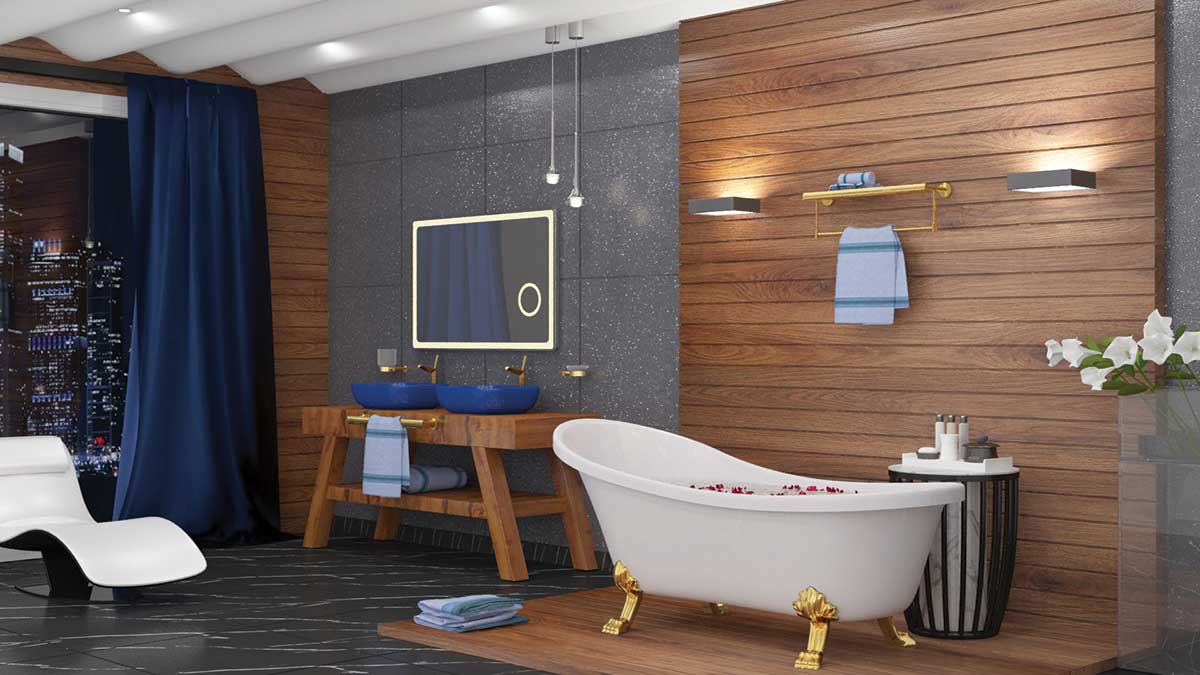
Concrete can be used especially well with white surfaces and in an industrial aesthetic, complemented by sparing use of metal or brass. Concrete surfaces also tone down the colour palette, allowing the use of monochromatic grey and black finishes in a bathroom.
Wood Panelling: Wood is one of the most versatile materials in interior design and can be used in various forms for different elements. It lends a remarkable textural quality to surfaces that can deeply influence a space’s vibe. Designers can choose from diverse options like vertical panelling, textured natural finishes, or even wood veneers.
Wooden tiles can be stacked linearly to create a sharp, minimal look or be shaped in patterns of hexagons or other distinctive forms. Wood goes exceptionally well when paired with neutral, earthy tones or white surfaces. It can be further complemented with the addition of natural elements like potted plants and stone pebbles.
Natural stone: One can incorporate natural stone in bathroom spaces in multi-faceted ways. Not only does it come in a variety of textures, finishes and diverse stone types for wall surfaces, it can also be used for sanitaryware like bathtubs and washbasins.
Use of textured natural stone like slate brings in a sense of earthiness and offers a rustic feel to a contemporary environment. It could be used along shower areas with wall lights highlighting the stone’s textural quality. Stones like marble or granite along walls or flooring give an exceptionally luxurious feel to space and work well when the bathroom space covers a large area.
Alternatively, when stone cannot be accommodated on wall surfaces or floors, it can be used on free-standing washbasins and bathtubs. A distinctive stone tub or basin can be used as a central element in the room, along which other accessories and decor items align themselves.
Project developers and retail customers will give more preference to brands with a proven track record and will select brands after looking at their service record and their ability to fulfil their commitments.
Saket Jain, Business Head, Fenesta
What trends do you see emerging with respect to materials, colours, and add-on features?
As aspirations and disposable incomes continue to rise along with consumer awareness, people are moving to bigger homes with better facilities or they are renovating and upscaling their present homes with modern fenestration solutions, and are even willing to pay a premium for them.
All these trends are generating greater demand for durable and sustainable fenestration solutions in the form of uPVC and Aluminium Doors and Windows. In recent times, the rising demand for weatherproof, energy-efficient fenestration products is moving the sector towards more innovative materials such as uPVC and Aluminium, owing to their insulating and resistance capabilities, along with the energy saving production process.
Aluminium and uPVC products provide significant insulation against rain and sound, while being resistant to saltwater, offering impact resistance and curbing harsh UV rays. During the extrusion process and production, uPVC consumes less power and in turn boosts energy conservation.
Similarly, another new-age material is the hybrid polymer for Internal Door which offer the aesthetics of wood and the durability of polymer, besides high stability, irrespective of weather conditions. They require minimal maintenance and are resistant to termites, water and warping.
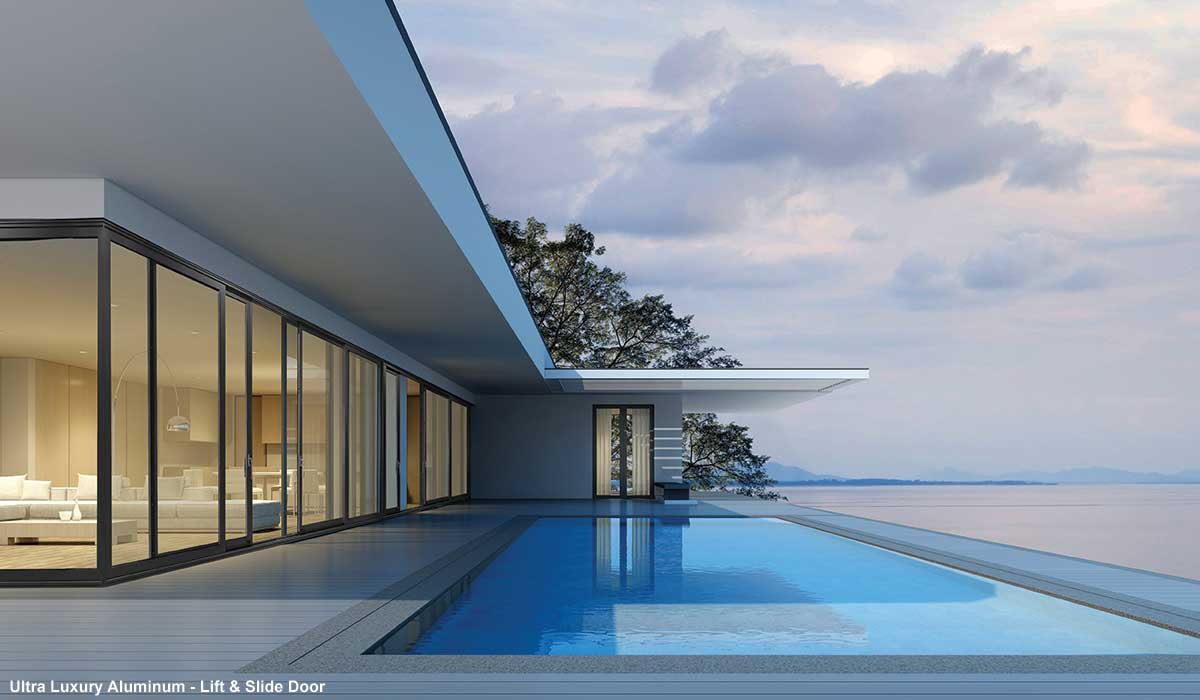
What has been the Fenestration Industry’s performance in 2021 and what growth do you envisage in 2022?
In 2021, the overall demand in the fenestration industry witnessed an upswing as compared to 2020. The industry is gradually looking to bounce back on track, owing to the stalled projects and the pandemic induced need for bigger and better homes. People are looking for better quality products that provide value for money and at the same time are sustainable.
However, there are still supply chain constraints and volatility in prices of raw materials that persist. Availability of containers /ships from the global markets in the current re-emergence of Covid-19 in Europe is leading to supply chain constraints.
Going forward, the industry is expected to grow by at least 20% plus rate. The demand is expected to go up with rising urbanisation and increased momentum in retail activities, which will lead to further increase in volumes.
How has digitalization impacted the Industry?
The Covid-19 pandemic has accelerated technology adoption and the need to digitalize business processes at a much faster pace. It has created a need to relook, rethink, and reimagine all the processes from day-to-day operations to manufacturing to supply chain to digitalising customer experience. The pandemic has forced and created a need to adapt and modernise quickly in order to keep operations running. In the fenestration industry, the rapid adoption of technology and digitalising processes both at the front and the back end has played an important role in responding and thriving during the pandemic.
At Fenesta, we have automated the extrusion and fabrication process by linking all our software and our machines, which has resulted in higher accuracy, minimalized wastage, and improved the quality of the final products.
Decor trends point towards a new age in designing sustainable spaces using handcrafted surfaces, furnishings, and products. There is a desire for clear and open spaces with a renewed focus on function, form, and flexibility in space utilization. Designers are also focusing on compartmentalizing new lifestyles within existing architectural designs as well as within newly built living spaces.
Sanjeev Agrawal, CEO & Founder, Orvi Surfaces
Flooring: With ‘staying in’ having become a major trend and lifestyle, people are recreating their favourite relaxing spaces within their homes. This has led to a preference for soft tones and subtle textures in stones for floorings along with dramatic designs and artistic textures that blend with the entirety of the space. With sustainable solutions and comfort being the most sought-after elements, there are infinite possibilities that one can use for designing floors and walls.
The Colour Grey: Grey coloured floorings, especially in living rooms, give a visual illusion of increased space. The scope for using vivid colors for the room’s furniture and rugs increases. Any shade and design would simply pop out and look prominent on a neutral grey canvas. Try grey tile floors along with metal inlay for a Scandinavian feel.
Oversized & Indigenous: Oversized Solid Stone surfaces that match with the other surfaces of the home are trending. The idea is to go for an oversized neutral stone floor and make sure that it blends with the wall design to create the illusion of a free-flowing, well-coordinated space. Oneness in design is a major floor trend.
Sustainable solutions: As people become more conscious and responsible towards the environment, a preference for artisanal and handmade products made with eco-sustainable materials is emerging. Whether home pieces or surfaces, products that support the survival of dying arts and are made by artisans, will remain meaningful for years to come. Sustainable solutions elevate the ingenious and environmental-friendly design. Light wooden textures, clean lines, and floating surfaces set the tone for Zen living with spaces that lean toward a ‘less is more’ approach while keeping the interior decor organic and natural.
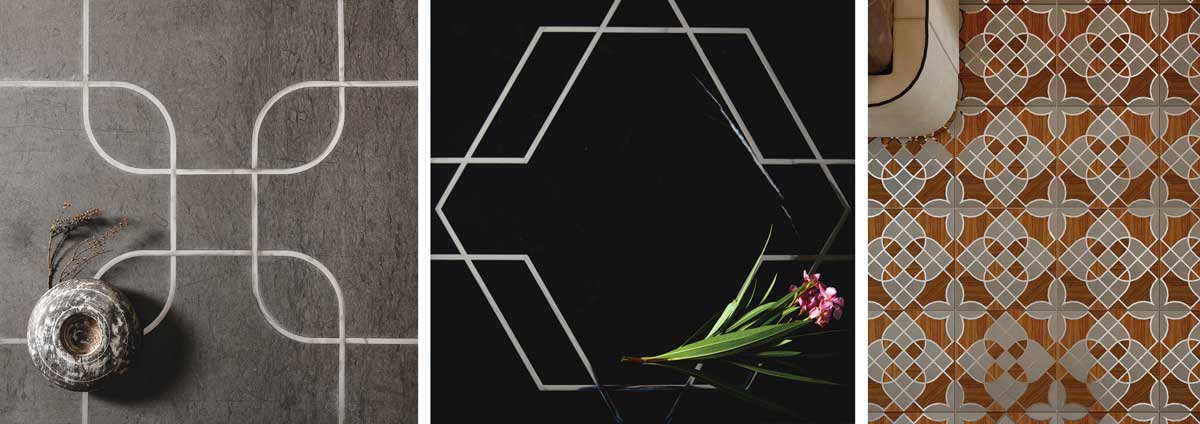
Contemporary yet functional: Single-use spaces seem to be a thing of the past. We expect interior design trends in 2022 to feature smart living ideas on multifunctional rooms which give more room for functionality and storage, with clean and innovative room-dividing methods.
Metal inlays in luxury surfaces: A melange of breath-taking options in surfaces has opened doors for infinite possibilities in home decor. With a kaleidoscope of colours, patterns and textures, these innovative marble surfaces with metal inlays can accentuate the splendour of living spaces.
Bespoke surfaces
The ability to provide bespoke services to clients lies in creating unique and beautiful surfaces. We need to deliver customised solutions when working with solid or liquid metal, wood or glass, semi-precious minerals or hand-made ceramics.
The era of work from anywhere is set to continue - a major factor explaining why people are looking for holiday homes or second home and have a clear affinity towards gated communities.
Lincoln Bennet Rodrigues, Chairman & Founder, The Bennet and Bernard Company
What shifts in the Real Estate sector have you observed of late?
The demand for second homes emanates from a variety of factors that have caused fundamental shifts in the industry over the last two years. The luxury holiday home business in India has witnessed significant prominence and appreciation in the recent times, making it one of the most dynamic segments of the real estate sector and witnessing growing demand from end-users as well as investors.
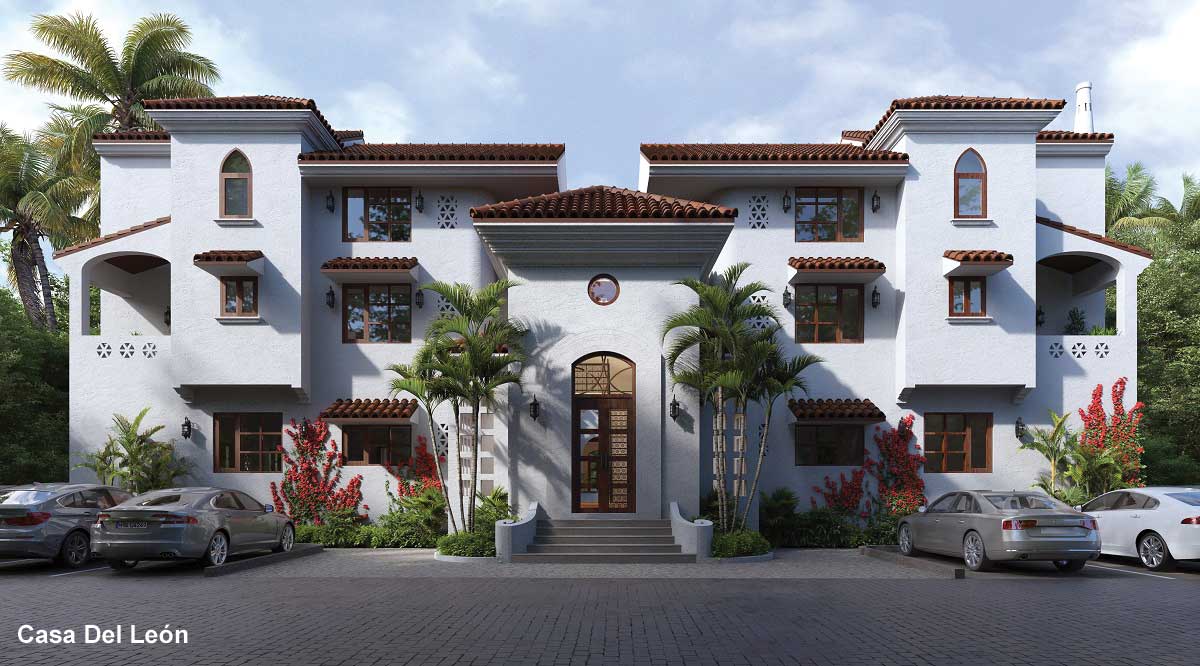
Post the pandemic what is the buyer sentiment in the real estate space?
Today, people feel the inherent need to make progressive lifestyle changes to lead a more balanced and healthy life. Luxury holiday homes segment fared well in context of the pandemic as the target group for luxury offerings was not impacted by the pandemic and further took advantage of the market conditions to invest, thereby creating a niche for second homes.
Even before the pandemic hit the country, the tranquil charm of Goa has attracted many investors looking to buy holiday homes because of the culture, lifestyle, and the value for money Goa offers. Also, the Covid-19 outbreak has given rise to a more urgent motivation - relative safety from the pandemic in holiday homes apart from better scope for capital appreciation.
People are looking for spacious own homes and are purchasing second homes as they would have a secure and safe home and would also be a good alternative to their primary abode. Moreover, the era of work from anywhere is set to continue, a major factor explaining why people are looking for holiday homes and have a clear affinity towards gated communities.
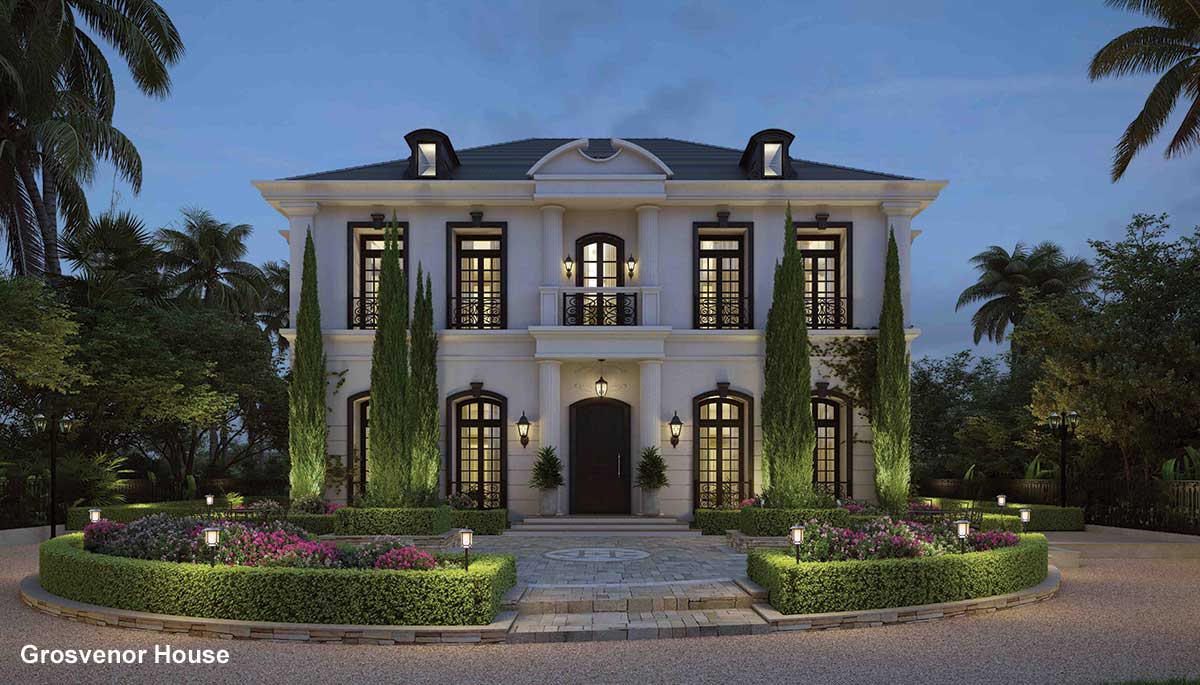
What trends are emerging?
Themed second homes are slowly becoming a noticeable trend in offbeat destinations around the country. We continue to grow at around 20 percent over the last two years driven by these new emerging consumption patterns. The emphasis now is to equate luxury dwelling with quality of life and people are prepared to spend to get the best that life has to offer.
While demand for these homes is driven primarily by high-net-worth individuals, the upper-middle section of the society is also now fuelling the demand for luxury holiday homes. Improved affordability is also one the major key demand drivers of second homes. Though the property costs have been rising over a period, so is the affordability due to rising income and lower interest rates.
A recent survey sheds light on an absorbing trend - the propensity of potential clientele to make an immediate investment into second homes. Unlike earlier, when capital appreciation and rental incomes were the governing criteria, an additional dimension of a safe home away from pandemic hotspots appears to have become a key consideration now. We are upbeat that the second home market in the country is poised to witness high traction in the near term.
Porcelain Slim Slabs are the answer to the world’s architectural demand for innovative and technologically superior material; they are strong, lightweight, flexible, and adaptable. Despite being large, they are surprisingly light, which makes them extremely convenient for façade applications.
Amit Shah, MD, Classic Marble Company (CMC)
What trends do you see emerging for wall cladding, flooring, and exterior facade applications?
For flooring and walls, Terrazzo engineered marble continues to be a big hit with its vintage designs in a new avatar. With its combination of elegance and utility, over the last five years Terrazzo has gained immense popularity in a variety of applications including flooring and wall claddings. Terrazzo marble slabs are durable, hygienic, less porous, and have remarkable beauty and strength, making them a perfect choice for flooring applications.
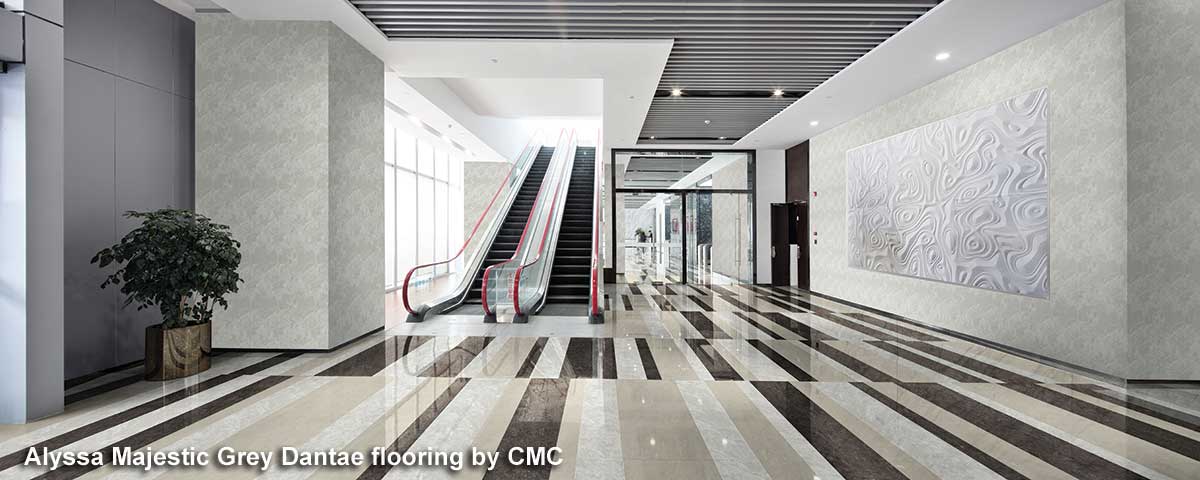
For high traffic areas such as malls and airports, quartz remains the preferred choice. It is also popularly used in kitchen countertops and vanities in residences.
For facade applications, Porcelain Slim Slabs are acclaimed for their strength, lightweight, flexibility, and adaptability. Despite being large sized, their light weight makes them extremely convenient for façade applications. They are also A1 Class Fire resistant and some types are flexible enough to install on curved surfaces.
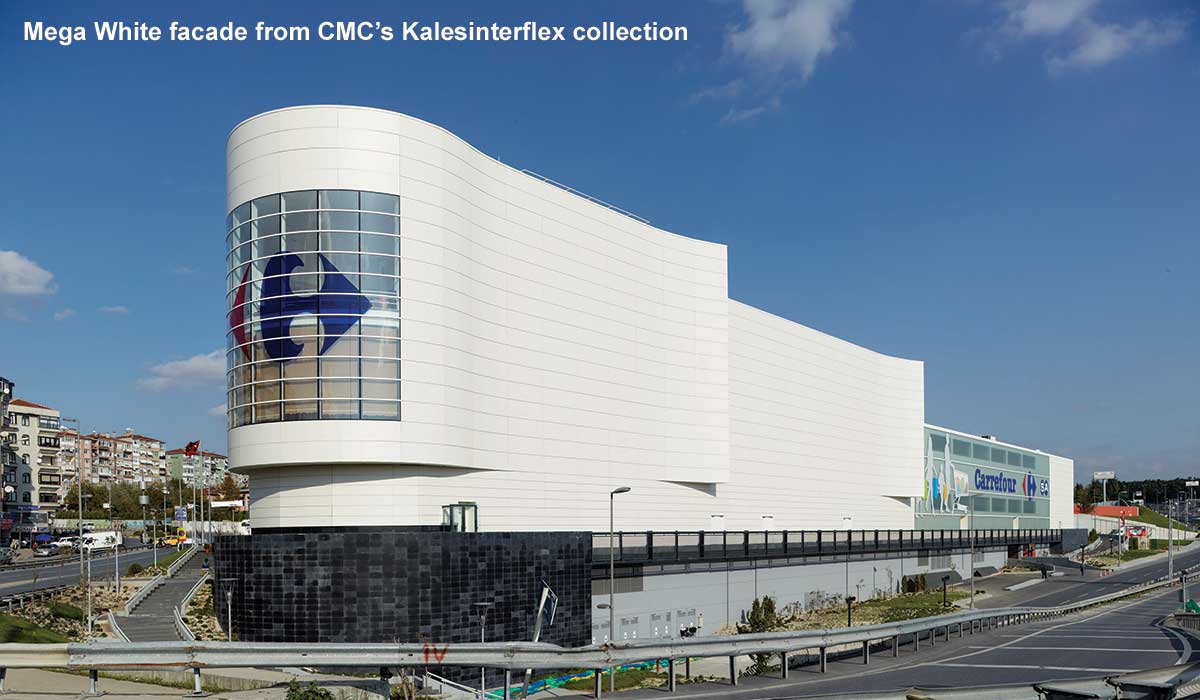
What new designs is CMC introducing?
CMC has introduced a Stone Art division which combines art and technology to offer unique, customized products. We offer a wide range of patterns that are in vogue like the fluting, murals with marble, marble partitions and marble inlays. A blend of traditional and contemporary, the products in Stone Art collection are a completely new genre of designs. Stone Art brings out the artistic brilliance of marble through the fusion of multiple designs, rendering an extravagant addition to any space. Engineered stone is mainly used for flooring, wall cladding, and countertop applications.
The new year 2022 will script new-age trends, growth, and dynamics in the real estate sector. It will be dynamic as it will set off new innovations in design, planning and amenities deliverables, befitting the preferences of modern home buyers.
Dr. Niranjan Hiranandani, Vice Chairman-National, NAREDCO and MD, Hiranandani Group
How do you see the Real Estate sector evolving?
Developers are geared to leverage the optimistic sentiment of the discerning home buyers and conducive market dynamics. The year 2022 will witness a string of new project launches in the residential and commercial market. An uptick of both buyer’s and investor’s confidence will augment home-ownership value and will further fast-track home up-gradation mode. The new normal life will evolve with a ‘bigger the better’ mindset and working near home will be the new fulcrum for the home-buying decisions. The prop & fin-tech will mark its strong presence in the construction and real estate industry to make ‘evolutionary’ trends property sector for 2022.
What do you anticipate from the young generation of buyers?
Young home buyers will be the new catchphrase in the industry garnering traction for modish homes inclusive of open layouts, flexi-spaces, home automation and sustainability quotient. The new-age home buyers will be skewed towards a well-balanced holistic lifestyle that facilitates a walk-to-work trend. Thus, commercial real estate will witness demand of dispersed portfolio with Hub and Spoke model in peripheral twin cities and suburbs. The slew of mega infrastructure will be a game-changer in developing new linkages that shall redefine the real estate landscape in the emerging live-wire centres. Hence, we will see the ‘rise of suburbia’ - a series of new micro-markets across India.
The real estate sector will see multi-blend projects to meet the new aspirations of the urban rich who are looking for extra space and luxury in the heart of big cities.
Kaushal Agarwal, Chairman, The Guardians Real Estate Advisory
The recent surge in demand for housing, against the backdrop of pandemic-inflicted necessity, low interest rates, and reduced stamp duty, has given an indication that the real estate sector is on track. However, the absence of an industry status, a single-window clearance and more financial options for developers are some of the issues that may eventually come to haunt the sector.
Moreover, the Covid-19 pandemic has changed the demand and supply dynamics. Even though the concept of owning a home has gained renewed importance, the very notion of an abode has changed. Today, the new remote working model has not only reduced the need of buying homes in Tier 1 cities, where most offices are located, but also created a new market in the Tier 2 and 3 locations.
This reverse migration revealed that employees would prefer to work from Tier 2 or 3 cities and if given an opportunity they would buy bigger homes in smaller satellite zones rather spending big in the plush cities. This new rising trend has indeed created a niche market for the developers and will provide opportunities for real estate players to expand their operations in non-metro cities in 2022.
At the same time, it has also forced the sector to reinvent its business model with multi-blend projects to meet the new aspirations of the urban rich who are looking for extra space and luxury in the heart of the big cities. To put it the other way, the real estate companies that adapt their investment and development strategies to stay ahead of changes in the real estate scenario will be best positioned to reap the benefit of 2022 and leverage the overall zeitgeist.
Trends observed in the real estate market in 2021 will continue to expand in 2022. With projects being launched in full swing and the government extending deadlines and support, the sector is expected to grow at a rapid speed.
Prashin Jhobalia, VP - Marketing Strategy, House of Hiranandani
The global pandemic has drastically changed our lives in the last two years. From the way we live to the way we work has altered. Industries, sectors, and economies of countries toppled due to the lockdown.
On the positive side, the economic stagnation, migration of the labour force which led to under-construction and upcoming projects getting stalled, setback to the growth of almost all businesses, and the renewed surge in Covid cases led to a sharper focus on innovations and transformations. With the new trends emerging, the real estate market has begun to evolve in order to adapt to the emerging new demands and requirements of the end-users. The demand and supply dynamics have also changed, and we are observing the following new trends:
Increasing preference to purchase ready-to-move homes: The pandemic instilled a sense of owning a home over renting. The sense of ownership and the emotion to provide a safe place for family and loved ones made individuals take the plunge. While all activities were halted, buyers preferred ready-to-move-in homes versus under construction projects due to the latter’s uncertainty of completion and the endless wait to receive possession.
Shift to spacious homes: Existing homeowners and potential buyers took a step further and upgraded their lifestyle by moving into bigger and more spacious apartments, cottages, and villas. They realized the need to have their own space to work from home, carry out leisure activities, have a corner for kids to study or play, and a place for senior citizens to unwind. Since families were together throughout the pandemic, individuals yearned for their own space without any disturbance or interference. They turned a part of their home into a library, study/office space, garden area, gymnasium, or simply an open space to sit back and enjoy.
Townships over Apartments: Potential buyers and customers are opting for integrated townships over singular buildings. Well-planned and designed townships offer world-class facilities such as a gymnasium, sports room, amphitheatre, cafes, gardens, spa, and play areas. Townships offer elevated lifestyles and luxurious amenities for everyone without the hassle to travel. People can spend more time in recreational activities or can spend time with their families.
Demand for plotted development: Plotted developments have always been considered a good investment as they are affordable. Plus, the demand for land parcels is high and the cost of land always appreciates. As cost of land is lower than a ready residential apartment, investing in a plotted development is a better option for buyers with a limited budget.
Rising desire to be surrounded by nature: Homebuyers have exhibited an increased preference towards apartments that are surrounded by natural flora and fauna. The presence of greenery, ample sunlight, and open spaces have a positive impact on one’s physical and mental health. Buyers do not mind spending a bit more on a product that enhances their sense of serenity and brings good health.
Young investors: The uncertainty brought in by the pandemic has taught millennials the importance of investing through multiple instruments. With numerous government policies, low interest rates on home loans, subsidies on interest rates for women, and private players offering additional benefits, has encouraged prospective buyers to invest in a home and benefit from the appreciation of its value.
Government policies and offers: To revive and maintain the economy, the Central and State Governments introduced multiple schemes such as low to no GST, attractive EMI schemes with low-interest rates, and no stamp duty. In fact, the RBI has maintained the status quo on the repo rate by keeping it unchanged at 4%. As the Covid-19 situation progressed with vaccinations being introduced, realtors introduced additional offers on all sizes and configurations of their apartments.
Digitalization: As walk-ins by potential buyers were shut during the lockdown, real estate players introduced virtual tours of their property using 3-D technology, drone shot videos of the townships and apartments, e-meets with the sales team, video conferencing, and engaging in social media activities to connect with customers. This transformation has helped connect developers and customers across cities and continents – making it easy and convenient even for international buyers to invest in India’s real estate market.
Flexible working has become popular with employees having the freedom to choose when, where, and how they work, which has led to the trend for more functional and customized furniture.
Manhar Khurana, Partner, Soulcraft Solutions
How is the CRE sector innovating and incorporating multi-purpose functionality and space-saving parameters into their furniture line for office workspaces?
Following the pandemic, CRE is reimagining workplace infrastructure as social distancing and contactless interaction has accentuated the importance of digital integration. To provide employees with resilient and flexible office spaces, CRE is redesigning offices by turning them into “community hubs” with breakout spaces rather than rows of desks.
CRE enterprises are innovating and introducing new workplace infrastructure accompanying their revamped workspaces in response to the changing regulations and norms. For example, incorporating a biophilic design and allowing natural light within the workspace will boost productivity and reduce stress; while installing touchless fixtures such as door sensors and voice-control elevators will promote hygiene and employee safety.
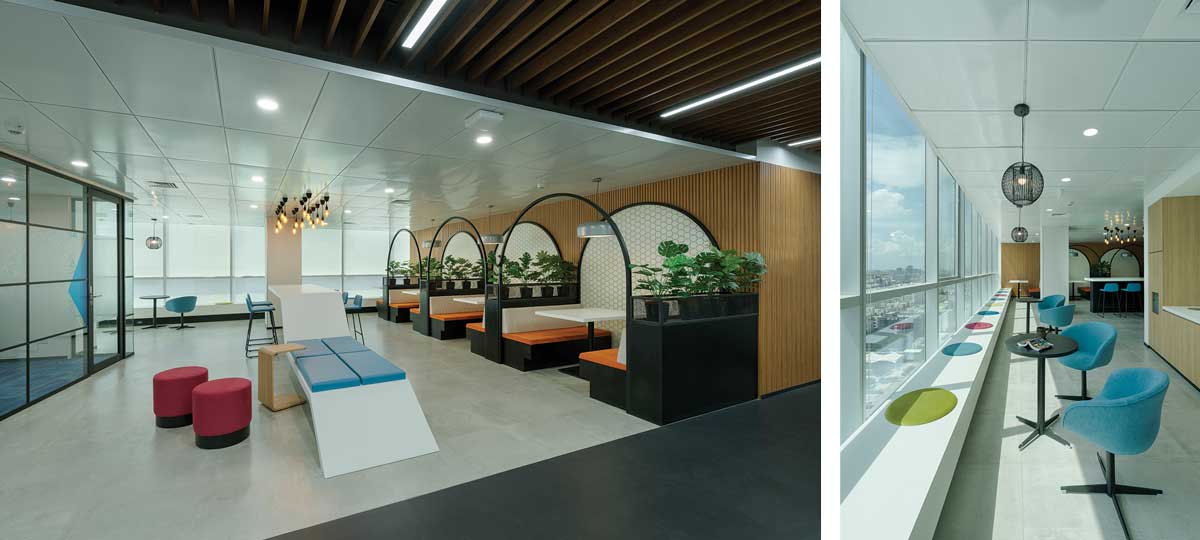
How has the evolution in the furniture industry accelerated amidst the pandemic in 2021?
Since its inception, the sector has contributed significantly to the economy. During the pandemic, the furniture industry underwent several changes catering to the demands of individuals working remotely.
Flexible working has now become popular, and employers are allowing their employees freedom of choice in when, where, and how they work. As a result, consumer trends have led to a need for more functional and customized furniture, where customers prioritize “comfort” as their deciding factor for purchasing. Consequently, the furniture has also got a more “homey” feel to it. The industry is redesigning products, goals, and asset sustainability to suit the current market trend in response to the pandemic. For instance, Soulcraft Solutions has teamed up with British firm Allsfar, a manufacturer of acoustic privacy panels for workstations and lounge seating.
Vertical growth, one of the most defining characteristics of Indian urbanization in over a decade, has become Indian real estate’s latest Covid-19 ‘casualty’. Among new projects launched since 2019, the share of high-rises had shrunk to 52% in 2021 against 63% in the pre-Covid year.
Anuj Puri, Chairman - ANAROCK Group
Of 1,178 projects launched in the top 7 cities in 2021, approx. 614 were high-rises of G+10 floors or more. In 2019, over 603 of 960 projects were high-rises. Newly launched projects include apartments, villas and row houses, and independent floors. In 2020, over 291 (60%) of 486 residential projects launched in the top 7 cities comprised high-rises.
NCR witnessed the most notable change in new project typologies. Of 62 new projects launched in NCR in 2021, around 39 (63%) were high-rises - denoting a 32% decline since 2019. In 2019, among a similar number of new projects (61), a significant 95% (58 projects) were high-rises. The growing consumer preference for independent floors since the pandemic shows no signs of relenting, particularly in key markets of Gurugram and Faridabad.
In the key Western cities of MMR and Pune, we are seeing supply trends shifting towards smaller, lower-rise projects of <100 units. The new demand realities of the Covid-19 pandemic towards low-saturation housing projects aside, both the completion timelines and capital requirements for smaller projects are much lower.
NCR spearheads this changing post-Covid-19 trend - of 62 projects launched in the region in 2021, approx. 39 projects (63%) were high-rises, while in 2019, of 61 projects, 58 projects (95%) were high-rises. Housing demand in NCR is shifting towards independent homes. Apart from this changing consumer demand, developers can complete and monetize independent homes projects much faster - in many cases, in as little as a year - while high-rises can take four years or more to pay off.
Predictably, land-starved MMR has seen a much lower change in the total share of the high-rises. Of 421 projects launched in the region in 2021, nearly 263 (62%) projects were high-rises. In 2019, of approx. 360 projects launched, 250 (69%) were high-rises. While apartments continue to dominate new supply, MMR is witnessing a marked increase in the launch of smaller low-rise buildings in 2021. In 2021, MMR saw approx. 56,880 units launched in approx. 421 projects. 2019 saw more units launched - approx. 77,990 units in over 360 projects.
Pune witnessed a similar trend with more low-rise projects launched; however, the city’s share of high-rises also declined – from 89% in 2019 to 72% in 2021. Of 235 projects launched here in 2021, 170 were high-rises. In 2019, of approx. 185 projects launches, 165 projects were high-rises.
In the southern cities, the high-rise culture is declining while demand for plotted developments has been on the rise after Covid-19. Many developers have begun focusing on plotted development projects. In the three key South cities Bengaluru, Chennai and Hyderabad, approx. 383 projects were launched in 2021, of which 118 projects (31%) were high rises. In 2019, of approx. 307 projects launched, 109 (36%) were high-rises.
Of 103 projects launched in Chennai in 2021, a mere 10 projects were high-rises. In Bengaluru, of 140 projects launched last year, 51 projects (36%) were high-rises and in Hyderabad, of 140 projects launched, 57 were high-rises.
Kolkata saw 77 projects launched in 2021, of which 24 (31%) were high-rises; in 2019, of approx. 47 projects launched, 21 (45%) were high-rises.
With the right reforms, building material industry in India is expected to grow by 8-10% in 2022; another key change that the industry would witness in 2022 is the shift to sustainability.
Ashwin Reddy, Managing Director, Aparna Enterprises
How is the Building Materials Industry growing?
The building materials industry has displayed sheer resilience as it slowly bounced back in 2021. The industry regained its mojo at a steady pace. While initially in April and May, the second wave disrupted the momentum, from June onwards, the revival trajectory has been positive. This resurgence was further aided by policy reforms like GST, RERA, and REIT, which were introduced to provide impetus to the sector.
Today, the building material industry stands at around USD 225 billion in terms of market size. The projected growth rate for 2022 is around 10%, and it is estimated to clock a CAGR growth of 8 to 9% in the next five years. In fact, sub-segments within this industry like Ready-Mix-Concrete, uPVC, and Tiles are all gearing up for an exciting 2022.
Which product segments will see increasing demand?
The Ready-Mix-Concrete, uPVC and aluminium doors and windows, and the tiles segments are expected to recover and become stronger by regaining most of the pre-pandemic momentum. Business and demand look promising. With people shifting to Work-from-Home/Hybrid working, and thus spending more time within their homes, there will be an increase in demand for building materials and the optimism will grow in 2022, where quality conscious customers will be further driving demand and sales, especially for high-end products in these categories.
RMC demand in the retail segment is also expected to grow, given the increased construction of residential and commercial real estate projects. In the case of doors and windows, sliding and casement applications will continue to dominate the overall demand, given their superiority in terms of aesthetics, quality, and functionality. Glazed Vitrified Tiles (GVT) are estimated to grow more in demand, due to their features like customisability and varied design options.
While demand forecasts and consumer buying trends look promising, this growth can only be made seamless by supportive government policies. There should be provisions to allow housing loans for all segments, irrespective of financial status.
How will demand be impacted by the Real Estate sector in 2022?
Developments in the housing sector directly impact the building materials industry, and by introducing norms that would enable greater investments and streamlining tax rates, the government would be bringing in a much-needed relief for the segment. Giving real estate an infrastructure status will also boost the morale of the industry as a whole, and clearances will be faster. The scope for financial lending will also increase, thereby boosting completion of projects in the pipeline.
What importance will Technology gain in 2022?
2021 was also the year of aggressive technology adoption and incorporation. Covid-19 ushered in a lot of changes, both in work and home environments. From automating manual processes to leaning and incorporating new technology processes, the industry has undergone a huge paradigm shift. This is expected to strengthen further in 2022. Technology is going to continue playing a major role in 2022, especially with reference to home automation, and automation at workplaces.
Innovations in building products like facial recognition, auto sensor lighting etc, are predicted to be some of the stand-out trends for 2022. Furthermore, products which intend to avoid human touch to prevent spread of germs and diseases are anticipated to see an increase in demand.
What challenges do you envisage?
The increasing cost of input materials is still impacting the overall demand and cash flow; the industry remains hopeful that the scenario will change and 2022 will see prices and the situation stabilising.
Another key change that the industry would witness is the shift to sustainability. With COP26 making resolutions to fight the climate catastrophe, there is an increased focus on using and producing environmentally sustainable products. In 2022, the industry should attempt to minimise impact and, as far as possible, use 100% recyclable and eco-friendly products for a sustainable future.
Like in the case of other businesses, pandemic disruptions have transformed the real estate sector, marking the new ecosystem with key emerging trends, which will bring a tectonic shift in the sector.
Vinod Behl
Low-Rise Developments: Low-rise developments (including independent floors and plotted developments) are set to gain momentum this year. During the last decade, real estate has seen continuous vertical growth with high-rise housing gaining prominence, but following the Covid pandemic, this premier trend has been a major casualty. According to Anarock Consultants, the share of high-rises dropped to 52% in top 7 cities in 2021 against 60% share in 2020. During the pre-covid year of 2019, the share of high-rises was even greater at 63%. In the NCR market, high-rises seen the biggest setback. Against their 95% share, in 2019, it has plummeted to 63%, registering a massive decline of 32%. The growing consumer preference for low rise independent floors shows no signs of abatement in Gurgaon market.
After NCR, the highest decline is registered in the Pune market at 17%, followed by Kolkata at 14%, Hyderabad at 10% and MMR at 7%. The major western markets of MMR and Pune are witnessing supply trends shifting towards smaller low-rise projects of less than 100 units. The trend in Hyderabad and Chennai is towards plotted developments.
Flexible Workspace: The flexible workspace has gone up from 8.4% in 2020 to 12.7% in 2021. This segment has almost doubled its share in the overall office leasing. Total leasing went up to 4.91 msf in 2021, up from 4.05 msf in 2020., registering 78869 seats/desks. The frequent lockdowns resulted in closure of offices, which led to the ‘work from home’ trend. This further hit office leasing/occupancy as occupiers preferred flexible workspace leasing amidst an uncertain environment.
Today, occupiers are opting for short-term flexible leases with an option to give up office space at short notice. This is not only convenient and hassle-free but also cost-effective. This has given a good opportunity to flexible space providers to expand their operations and increase their share. In Pune alone, flexible office space accounted for a considerable 37% share in the overall Grade A leasing in the city in 2021.Going forward, this trend will further increase, with demand largely driven by consulting, IT-BPM and e-commerce companies that are establishing multiple satellite offices in suburban locations across metro cities.
Rise of Small Cities: The government’s focus on infrastructure development and the launch of Rs 1 lakh crore National Infrastructure Pipeline (NIP), has given a massive connectivity boost to real estate in small cities. especially the suburban/satellite cities in the peripheries of metro and tier 1 cities. This infra connectivity has made commuting between metros and their suburbs faster and convenient, which has boosted the preference for living in suburban towns as residential property prices are much there, compared to metros and tier 1 cities.
Desire for More Space: People are preferring more spacious spaces, especially with need for a home office. Demand for second homes/vacation homes in smaller cities, particularly in hills and beach locations, has gone up. Moreover, corporate houses and businesses are decentralizing their corporate offices and opening satellite offices in suburban towns/tier2-3 cities. The availability of high-speed internet is helping in this regard. This trend is not just giving a boost to commercial real estate but has also opened up new employment opportunities in smaller towns.
Technological Transformation: Technologies like Artificial Intelligence, Machine Learning, Internet of Things, and Virtual Realty have made big inroads in making businesses more resilient, adaptive, transformative, and efficient. The year 2022 will see this technology-triggered shift in real estate and construction sector gaining further momentum. Going forward, the sector will see bigger gains of this technological transformation, in terms of increasing transparent transactions, improved customer service, and cost-effectiveness, and greater operational efficiencies.
Developers bogged down by project delays and stalled projects are already adopting modern construction technologies for more efficient project management and execution, and achieve faster and quality project completions, resulting in time and cost optimization.
Project marketing and sales are being increasingly aided by digital tools like 3D Walkthroughs, AI integrated chatbots etc; while for property buyers online searches are helping them make informed decisions for property purchase, sourcing home loans, and making property transactions, in an easy, convenient, and time saving way. Even post-delivery, facility management has got a boost with advancements in technology.
Neighbourhood Malls & High-street Retail: Developers are increasingly considering the development of high street retail, given the current preference for open spaces and high street retail by the shoppers – as seen in Gurgaon and Noida.
To make pre-leased high street retail spaces attractive for buyers and investors, developers are offering handsome monthly assured returns. As pre-leased office spaces are also popular among investors, many developers are going in for mixed use developments shop cum office), offering attractive assured returns.
With home buyers preferring bigger and more affordable residential spaces in suburbs/satellite towns of big cities and in tier 2-3 cities, the concept of neighbourhood malls will be prevalent in 2022 onwards. DLF has announced the launch of about half a dozen such malls, following a successful launch in Gurgaon.
Green, Sustainable & Wellness Spaces: Real estate developers are taking to environment-friendly spaces as occupants showing a strong inclination for green projects with gold and platinum IGBC ratings and the highly advanced EDGE ratings.
Such spaces not only protect the environment but are also energy and water efficient as they conserve resources with smart building solutions. The cost-optimization results in reduced operational costs. The smart tech systems ensure a healthy internal environment, ensuring clean, purified air, devoid of dust pollution, and also control temperature, humidity. and lighting, thereby creating optimal conditions for enhancing employee liveability and productivity. Developers of senior homes, who are already focusing on green and healthy spaces, are now paying greater attention to integrate these sustainability aspects in their building designs.
Design & Décor Trends: Designing today is being assisted by digital models for greater accuracy and assessment of building material requirement and energy consumption. There is an increasing trend of building designs that take advantage of natural light and natural air and optimize HVAC systems. By using Building Information Modelling (BIM) and 3D mock-ups, designs are made more efficient. The use of technology at the design stage is also helping in property valuation.
We are also seeing the trend of fully furnished homes and ready-to-install interior designs. Some leading developers and real estate consultants are bundling interior designing with their other services for home buying. Home decor companies like LivSpace are showcasing a pre-created look for rooms, kitchen and other areas of the home on their platform. Customers can choose the designs of their choice, which can be further customized. LivSpace has even formed partnerships with developers for this purpose.

















